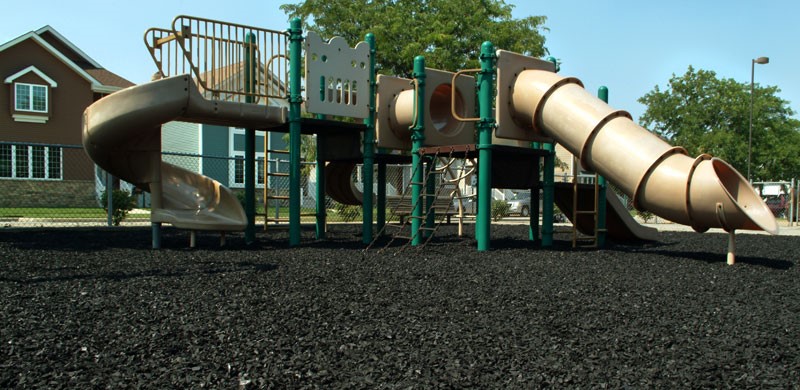Harmful Chemicals Found in Artificial Turf on Playgrounds
Is your child’s playground surface safe?
Recycled rubber artificial turf products were introduced in the 1990s and swiftly installed on playgrounds and athletic fields around the world—with no prior safety testing. Tires contain heavy metals, carcinogens, and other toxic substances. Yet, they are routinely grinded into small crumb rubber pellets for recreational use. Harmful chemicals in artificial turf is raising new concerns.
Tire rubber composition is highly variable across manufacturers and test results identify numerous chemicals of concern in turf containing crumb rubber infill. In addition to crumb rubber infill, artificial athletic turf also consists of synthetic grass blades and several layers of backing materials. The safety of any these materials has not been proven.
Are children being exposed to harmful chemicals found in artificial turf?
How does exposure to harmful chemicals in artificial turf occur?
- Inhalation of Volatile Organic Compounds (VOCs) and small particulates.
- Contact and absorption through the skin or open wounds.
- Ingestion of small turf infill particles.
- Weather conditions, temperature, and type of activity all affect the level of exposure.
Other concerns about the safety of playground turfs
- Heat: synthetic turf is typically dark and does not vaporize water, therefore surface temperatures can get up to 60 degrees higher than natural grass and have been measured as high as 160 degrees on a summer day.
- Latex allergy: synthetic rubber does contains latex, although it is in relatively low concentrations. Individuals with latex allergy should be warned about possible allergic reactions.
- Contact injuries: athletes playing on turf fields have been shown to have more abrasions, also referred to as “turf burns,” which in turn can harbor infection.
What is being done about this?
Manufacturers claim that a number of scientific studies indicate low risk of harm from recycled tiring playing surfaces. However, these studies were not conducted in the comprehensive process required to definitively prove their safety.
As a result of the growing concerns about recycled rubber surfaces, the Environmental Protection Agency (EPA), Centers for Disease Control and Prevention/Agency for Toxic Substances and Disease Registry (CDC/ATSDR), and the Consumer Product Safety Commission (CPSC) revealed the Federal Research Action Plan on Recycled Tire Crumb Used on Playing Fields and Playgrounds. The goal is to explore data gaps and assess the risk of toxic exposure.
While the results of these studies are still pending, it is worth considering whether the presence of any cancer causing agents and other known toxins in recycled rubber playing surfaces is a strong enough reason to mandate the use of safer alternatives. In recent years, several alternative fills have been developed.
It should be the responsibility of municipalities to review all available data and address the concerns of the communities that utilize the surfaces.
Safety Tips & What You Can Do:
- Avoid very hot days.
- Choose different surfaces for passive activities such as sitting, lounging, picnicking.
- Ensure good ventilation of indoor fields by opening doors and windows and using fans.
- Monitor young children to prevent ingestion.
- Wear shoes on artificial turf.
- Wash hands before eating, drinking, or adjusting a mouth guard.
- Clean cuts and abrasions immediately.
- Brush hair thoroughly after play.
- Remove and clean shoes and gear outside before getting in car.
- Take off shoes and shake out your children’s equipment and clothes at home.
- Shower immediately after playing on artificial turf.
- Vacuum any infill that comes into your home.
An important part of childhood is the freedom to play and every child deserves a safe space to be a kid!
Source
Artificial Turf: A Health-Based Consumer Guide by Children’s Environmental Health Center
Keep reading – learn more about making health-conscious choices at playtime with any of our posts in At Play.


